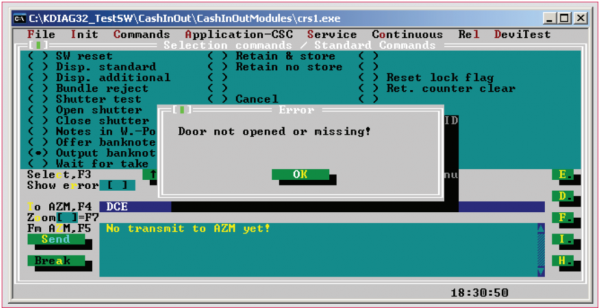Prominent North Korean websites were back online Tuesday after an hours-long shutdown that led to speculation by some researchers and web watchers that the country’s Internet connections could be under cyberattack.
South Korean officials told the Associated Press that Internet access to the North’s official Korean Central News Agency and the Rodong Sinmun newspaper were working normally Tuesday after being inaccessible earlier. Those sites are the main channels for official North Korea news, with servers located abroad.
The outage came less than a week after the U.S. vowed an unspecified response to a massive hacking attack against Sony Pictures Entertainment over the release of the comedy film “The Interview.” The plot of the comedy centers on the assassination of North Korean leader Kim Jong Un, leading to widespread speculation that the country was responsible for the attack. Late last week, the FBI publicly blamed North Korea in the incident, though Pyongyang has denied involvement.
The White House and the State Department on Monday declined to say whether the U.S. government had any role in North Korea’s Internet problems.
“We have no new information to share regarding North Korea today,” White House National Security Council spokesperson Bernadette Meehan told Fox News. “If in fact North Korea’s Internet has gone down, we’d refer you to that government for comment.”
North Korean diplomat Kim Song, asked Monday about the Internet attack, told The Associated Press: “I have no information.”
North Korea is one of the least connected countries in the world. Few North Koreans have access to computers, and even those who do are typically able to connect only to a domestic intranet that works with its own browsers, search engine and email programs, according to South Korea’s Unification Ministry. Though North Korea is equipped for broadband Internet, only a small, approved segment of the population has any access to the World Wide Web. More than a million people, however, are now using mobile phones in North Korea. The network covers most major cities but users cannot call outside the country or receive calls from outside.
Doug Madory, the director of Internet analysis at New Hampshire-based Dyn Research, a company that studies Internet connectivity, said the problems were discovered over the weekend and grew progressively worse to the point that “North Korea’s totally down.”
“They have left the global Internet and they are gone until they come back,” he said.
He said one benign explanation for the problem was that a router may have suffered a software glitch, though a cyberattack involving North Korea’s Internet service was also a possibility.
Routing instabilities are not uncommon, but this particular outage had gone on for hours and was getting worse instead of better, Madory said.
“This doesn’t fit that profile,” of an ordinary routing problem, he said. “This shows something getting progressively worse over time.”
Another Internet technology service, Arbor Networks, which protects companies against hacker attacks, said its monitoring detected denial-of-service attacks aimed at North Korea’s infrastructure starting Saturday and persisting Monday. Such attacks transmit so much spurious data traffic to Internet equipment that it becomes overwhelmed, until the attacks stop or the spurious traffic can be filtered and discarded to allow normal connections to resume.
President Obama said Friday that the U.S. government expected to respond “proportionately” to the hacking of Sony, which he described as an expensive act of “cyber vandalism” that he blamed on North Korea. Obama did not say how the U.S. might respond.
“We aren’t going to discuss, you know, publicly operational details about the possible response options or comment on those kind of reports in anyway except to say that as we implement our responses, some will be seen, some may not be seen,” State Department spokeswoman Marie Harf said last week.
Via: foxnews
